US invaded by savage tick that sucks animals dry, spawns without mating
Eight states reporting the little suckers. No evidence they're carrying disease—yet.
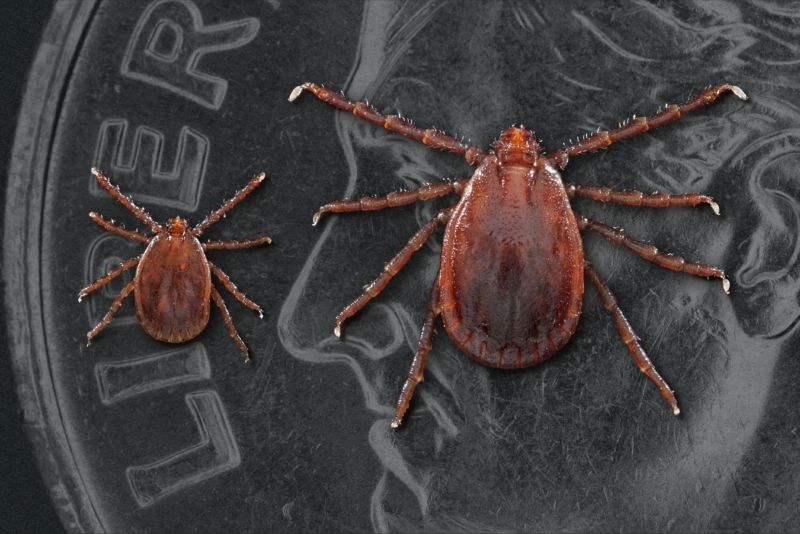
Enlarge / Two Haemaphysalis longicornis on a US dime.
A vicious species of tick originating from Eastern Asia has invaded the US and is rapidly sweeping the Eastern Seaboard, state and federal officials warn.
The tick, the Asian longhorned tick (or Haemaphysalis longicornis), has the potential to transmit an assortment of nasty diseases to humans, including an emerging virus that kills up to 30 percent of victims. So far, the tick hasn’t been found carrying any diseases in the US. It currently poses the largest threat to livestock, pets, and wild animals; the ticks can attack en masse and drain young animals of blood so quickly that they die—an execution method called exsanguination.
Key to the tick’s explosive spread and bloody blitzes is that its invasive populations tend to reproduce asexually—that is, without mating. Females drop up to 2,000 eggs over the course of two or three weeks, quickly giving rise to a ravenous army of clones. In one US population studied so far, experts encountered a massive swarm of the ticks in a single paddock, totaling well into the thousands. They speculated that the population might have a ratio of about one male to 400 females.
Yesterday, August 7, Maryland became the eighth state to report the presence of the tick. It followed a similar announcement last Friday, August 3, from Pennsylvania. Other affected states include New York, Arkansas, North Carolina, Virginia, and West Virginia.
Plagued paddock
It all started last August in New Jersey, the first state to identify the bloodsuckers. In a case report recently published in the Journal of Medical Entomology, infectious disease and tick experts reported the sad state of a 12-year-old Icelandic sheep housed alone in a paddock amid manicured lawns and large houses in the state’s wealthy Hunterdon County. No other animals were located on the property, and the sheep had never traveled outside of the country. Yet the beast was besieged, covered by hundreds of feasting ticks of all life-stages.
Just stepping foot in the paddock, the owner and health investigators were inundated with thirsty ticks that instantly began clawing up their pant legs. DNA analysis ultimately determined that the ticks were H. longicornis. Investigators found only one male out of 1,058 ticks collected.
To fight back the swarms, the owner doused the sheep in a wash of the insecticide permethrin. By November, it was cleared of ticks, and population levels in the vegetation around the paddock seemed to be dying down, although that was likely due to several nights of below-freezing temperatures.
In April, New Jersey’s Department of Agriculture confirmed that the population had successfully overwintered in the state, suggesting that it has now become established there.
Spreading scourge
So far, it’s unclear how, when, or where H. longicornis first arrived in the country. According to a regional consortium of vector-borne disease experts, archived tick samples suggest the species arrived several years prior to 2017. In the past, researchers have occasionally intercepted the ticks in US quarantine stations, including finding a tick on a quarantined horse at a station in New Jersey in 1969.
H. longicornis is native to parts of East Asia, namely China, Japan, the former USSR, and Korea, living in meadows and grassy areas near forests. They’re also an established invasive pest of cattle in New Zealand, parts of Australia, and several Pacific islands. They’ve been known to feed on livestock like sheep, goats, cattle, and horses as well humans, dogs, cats, birds, and a range of wild animals, including bears, foxes, raccoons, rabbits, deer, and opossum.
In Asia, the longhorned tick is known to carry a variety of pathogens, including Rickettsia japonica, the bacteria behind Oriental spotted fever, and Theileria orientalis, a parasite that causes cattle theileriosis. It has also been found harboring relatives to pathogens present in the US, including bacteria that cause anaplasmosis and ehrlichiosis, the parasite that causes babesiosis, and the Powassan virus.
Additionally, H. longicornis may harbor a newly emerging virus that causes SFTS, which is short for severe fever with thrombocytopenia syndrome. SFTS was first identified in China in 2009 and is marked by fever, vomiting, hemorrhaging, and organ failure. Reported fatality rates fall between 6 percent and 30 percent. Several studies have pointed to the longhorned tick as being a reservoir and source for the virus.
Journal of Medical Entomology, 2018. DOI: 10.1093/jme/tjy006 (About DOIs)
https://arstechnica.com/science/2018/08/us-invaded-by-savage-tick-that-sucks-animals-dry-spawns-without-mating/?fbclid=IwAR1OQl95ejxmZEFUtwzwTMV0VNIhDnrj87sMn3BybkrnVFsEwZlYVhMu6HM
ADDITIONAL INFORMATION:
https://academic.oup.com/jme/article/55/3/757/4840594
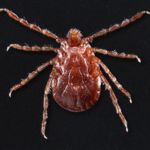
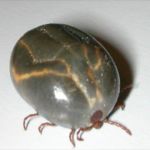
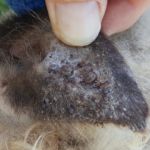
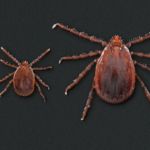

No comments:
Post a Comment